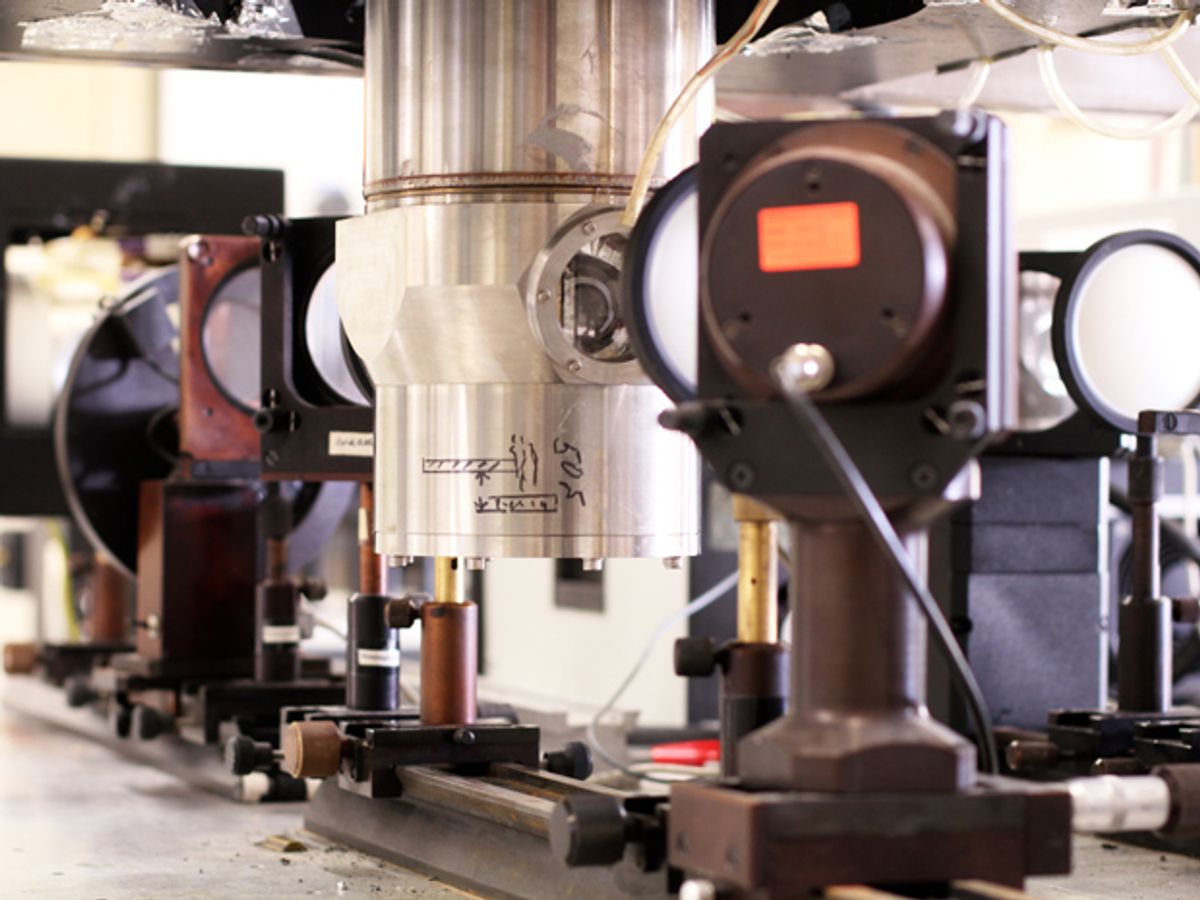When physicist Aviad Frydman and his team set out to perform experiments on ultra thin superconductors they had no idea that they would encounter what might be an analogue to the Higgs Boson—the particle whose discovery by a team at the Large Hadron Collider led the way for the 2013 Nobel Prize in Physics.
A multinational research team recently reported the first-ever observations of what is known as the Higgs mode in superconducting materials. The discovery of the Higgs mode, reported in late January 2015 in Nature Physics, might eventually help physicists gain a different perspective on one of nature's most basic building blocks.
The background for the current discovery goes back to the early 1960's. At that time open questions in superconductivity led to development of a new theory in the field by physicists led by Nobel laureate Philip Warren Anderson from Princeton University.
Frydman says that some of the inspiration for the standard model we use today as the theoretical basis for particle physics, was based on Anderson's superconductivity ideas. The Higgs particle was predicted by the standard model, but it took almost 50 years before for experimental physicists actually observed it. The particle is key to a theory describing the origins of mass.
The Higgs boson’s equivalent in a superconductor, the Higgs mode is a byproduct of the theory of superconductivity, and it took a bit longer to discover. The reason why it had never been observed in superconductivity is that it requires a particular amount of energy—around 10 meV. The problem is that this relatively low energy level is still too high to maintain the superconducting properties of existing superconducting materials.
Frydman and his team were performing a different experiment when they accidentally stumbled upon a way to solve this problem. They were working with a disordered superconducting films several nanometers think made out of niobium nitrite and indium oxide. In order to excite the energy levels of the superconducting material, Frydman's team illuminated the cooled superconductor with 0.05 to 1.2 terahertz radiation. Using a spectrometer they were able to measure a low-energy absorption by the superconductor providing strong empirical evidence for the Higgs mode as predicted by the theory.
One of the biggest advantages of the current research is the ability to look at something as fundamental as the Higgs mode using relatively inexpensive lab equipment, in contrast to CERN's multibillion-dollar particle accelerator. This is by no means saying that the superconducting experiment will make the Large Hadron Collider obsolete, however it might give more researchers the ability to look into basic physics at a far lower cost.
The project, which began in 2012, required a collaborative effort of scientists from across the globe. The equipment and technical guidance were supplied by the Stuttgart University in Germany, theoretical work was carried out by researchers from the Technion in Israel and Ohio State University, and samples for the experiment were supplied by a scientist at the Tata Institute of Fundamental Research in Mumbai. The experiments were conducted in Germany by doctoral student Daniel Sherman under the supervision of Prof. Frydman, from Bar-Ilan University’s Department of Physics in Israel and professor Martin Dressel from Stuttgart University.



